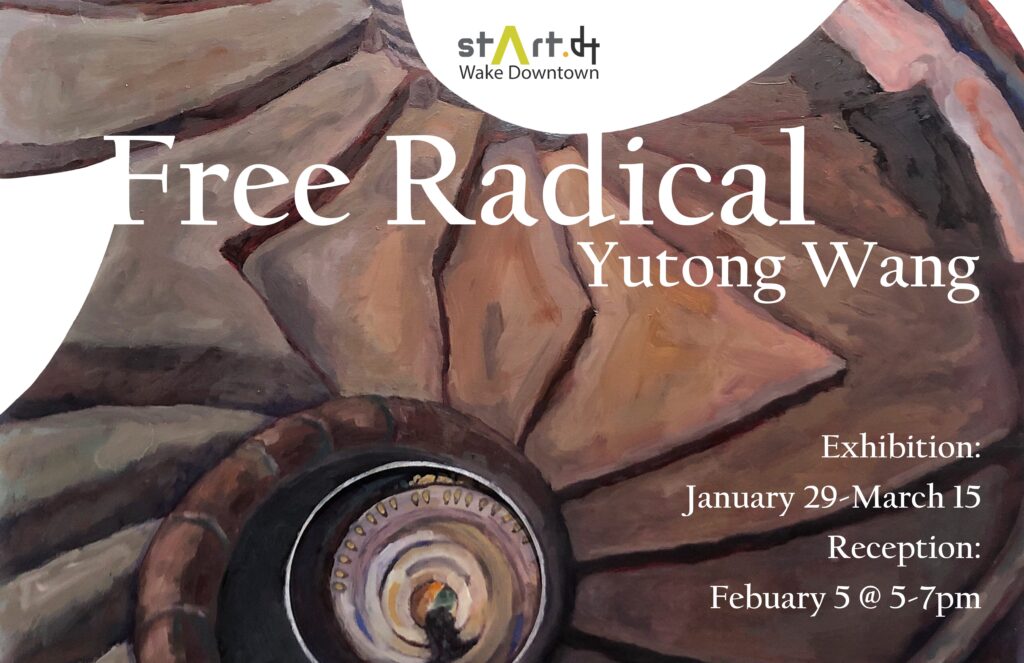free radical

Free Radical
Works by Yutong Wang (’24)
JANUARY 29 – MARCH 15
stArt.dt (Wake Downtown)
“What we saw were photons hitting the retina, what we heard were the vibrations of the tympanic membrane, what we touched were the conformational changes of mechanoreceptors, and what we smelled was the binding of molecules to the olfactory receptors—these sensory experiences all fragment into elemental pieces before being reassembled by our minds into a coherent, “common sense” reality. This exhibition is about the mental process of dissociation and reassociation, and a display of the pattern of my personality with strong science elements.
The exhibition’s title, free radical, derives from the biochemical definition of this molecular species that has a dual role of toxic and beneficial, highly reactive while capable of independent existence. The title has three layers of meaning: a symbol of my fascination for science, a metaphor for my personality, and the intention to liberate the objects I’ve perceived from their usual context and let them freely react to audiences’ thoughts.
Everything starts from the still life series “Pass by,” in which the eight random objects gave me a feeling of connection and ignited the inspiration to hybridize elements from the research lab to statues, from architecture to living forms. For example, in the diptych “de novo”, the three stone statues are a metaphor for viruses, which molecularly mimic human cellular machinery but are not real humans, just like the statues are in human shape but not real humans. As a scientist, I am obsessed with the molecular mechanisms inside living organisms. Beneath the SDS-PAGE gels, the H&E histology staining slices, the optical microscopy images, and the cell culture medium, I can “see” the unresting molecules operate in a certain order to support lives. I wish to share the beauty of scientific concepts and the form of experiments with people inside or outside of the research community.
The linkages shown in my paintings are not limited to the facet of science but a mixture of thoughts, emotion, and sensation, presented via elements of gothic fiction, the architecture of churches, and dystopian novels. In each of my paintings, I’ve taken a real-life subject and depicted it subjectively. The triptych “The Burial of the Mystery” is a reflection of “whether science and mysteries can coexist.” The scientific elements were embedded into the shape of stained glass windows, flanked by two seraphs depicted with the effect of X-ray. For me, these paintings hint at the unconventional, irrational, and expressive side of my nature, which can feel to me like seeing the soul apart from the physical body, where desire can take the form of the destructive but indispensable features of the free radical. The physical quality, the “body” of the paint itself, which I use both for controlled depiction but also for its own unruly qualities, best represents my feeling of the duality that natural law can decompose into chaos but can also rebuild order.”
Reception
Monday, February 5 @ 5-7 PM

